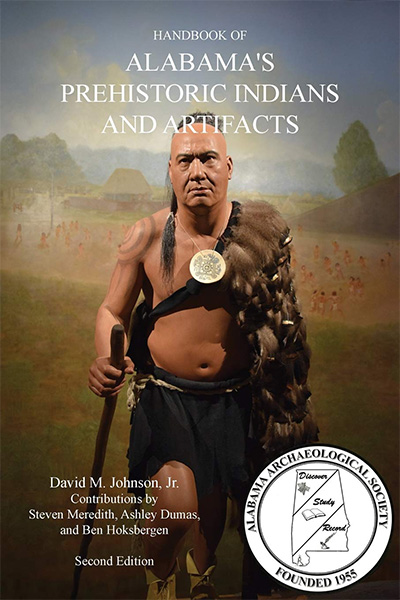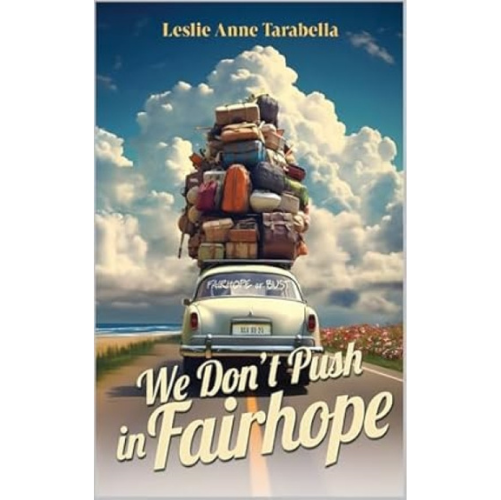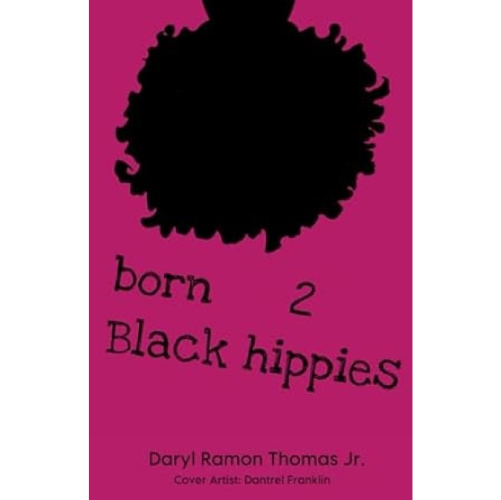Handbook of Alabama’s Prehistoric Indians and Artifacts
By David M. Johnson, Jr.
With contributions by Steven Meredith, Ashley Dumas, and Ben Hoksbergen
Borgo Publishing, Tuscaloosa, AL, 2019 (second edition)
Paper, $42.95
Genre: Nonfiction
Reviewed by Bill Plott

One hardly knows how to begin a review when a book has such a comprehensive treatment of its subject. This extraordinary work is not only a handbook for professional and amateur archaeologists, but also a primer, an introduction to Alabama’s rich Native American prehistory for the merely curious and inquisitive reader.
This work is even more extraordinary in that its genesis was not from the work of a professional archaeologist but rather the curiosity of a soon-to-be avocational archaeologist. In his introduction to this second edition Johnson tells of having a marginal interest in arrowheads his friends would find when growing up in south Alabama. Some years later as an adult, he was disking a recently acquired parcel of land when he unearthed what proved to be a grindstone amidst pot shards, projectile points, and other material. It was the opening of a door.
His devotion to the field has brought him respect from professionals. Indeed, contributing to the book are Ashley Dumas, University of West Alabama professor and researcher of Fort Tombecbe and slave housing; Ben Hoksbergen, Cultural Resource Manager and Installation Archaeologist at Redstone Arsenal; and Steven Meredith, who first joined the Alabama Archaeological Society at age 13 and has recorded more than 800 sites in the state of Alabama.
As a handbook, the 489-page book begins with basics. There are presentations on archaeological dating, the geographical regions of Alabama, and the very definition of archaeology. Perhaps most cogent is: “Archaeology is like a jigsaw puzzle, except you can’t cheat and look at the box.” The final chapter details significant archaeological sites in Alabama.
For the newcomer and the curious, it is an extraordinary reference. Found an arrowhead along a stream bank while hunting, fishing, or hiking? Want to know something more about it? There is more information in one page here than one could possibly imagine. For openers, consider the find to be a projectile point (not the generic “arrowhead”). The bow and arrow did not likely appear in North America until the Woodland Period (generally 700 BC to AD 1100). Therefore, arrowheads were preceded for hundreds of years by points used as knives, atlatl darts, spearheads, and even other kinds of tools.
If one finds a point resembling one of the scores of full-color images in the book, a wealth of information is available. For example, a Kirk Corner Notched point will be less than two inches long, triangular in shape with a mostly serrated blade edge with a random flaking style.
There is also extensive information and photographic evidence of pottery, along with detailed maps of the section of the state and/or Southeast where the artifacts were found. There are sections on beads, effigies, drills and assorted tools, and even small disks that were perhaps used for gambling or gaming. Altogether, artifacts included are from about half of Alabama’s 67 counties.
The book is lavishly illustrated and well indexed. There are appendices on points and pottery and extensive references.
Pick it up and thumb through it from time to time to study the images or read about the state’s prehistory. It is a book that will enjoy a spot in the reviewer’s bookcase alongside such works as the Alabama histories by A. B. Moore and Dr. Edwin C. Bridges, W. Stuart Harris’s Dead Towns of Alabama, and Virginia O. Foscue’s Place Names in Alabama.
Bill Plott is a retired journalist and author of The Negro Southern League, A Baseball History, 1920-1951 (McFarland, 2015), and Black Baseball’s Last Team Standing, The Birmingham Black Barons, 1919-1962 (McFarland, 2019).





